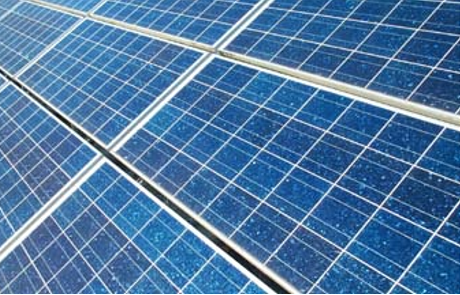solar panel
A solar module or PV module is an array of individual solar cells or thin film solar cells. In such a solar cell array, many individual solar cells are interconnected, mechanically and electrically, to form a larger functional unit. Solar modules are waterproof coated and packaged in glass or plastic on the front and back.
The individual solar cells of a solar module are electrically connected in series in such a way that a closed circuit results. As a result, the solar energy from each individual solar cell contributes to the total electricity generated. To prevent shaded or dirty solar cells from affecting the overall current flow, a bypass diode is located in parallel with each individual solar cell to bypass the corresponding solar cell. The conductor guides for interconnecting the solar cells to form a solar module are located between the solar cells; in photovoltaic systems, they are located between the PV modules. A PV module can generate peak power between 10 Wp and 100 Wp, depending on the solar radiation.
To protect against the weather, the translucent side is covered with a glass pane, which is connected to the back cover in a watertight manner. The solar cell itself is embedded in a plastic film made of ethylene vinyl acetate( EVA), with the top side welded airtight to the bottom side. The underside of the solar modules consists of a carrier material, which can be glass or plastic. The solar cells are mounted in an aluminum frame or a corrosion-free metal frame.
The DC voltage generated by the PV module can be, for example, 12 V or 24 V and is fed from the generator junction box(GAK) to the grid-feeding device(NEG), a regulated inverter, and from there into the low-voltage grid. The generator junction box is the interface between the PV module and the inverter. The regulated inverter must feed the AC voltage into the low-voltage grid with frequency and phase accuracy. DC/DC converters or micro-inverters, which are small inverters for each individual solar module, are an efficient alternative to the inverter. They are installed under the solar module and have a much higher efficiency than the central inverters.

